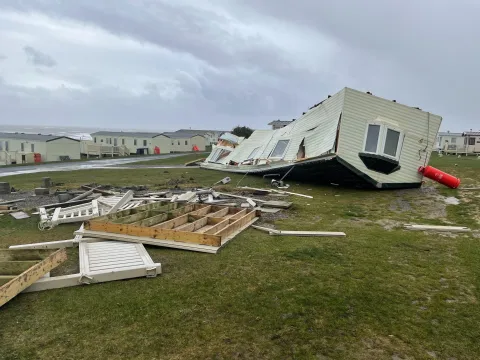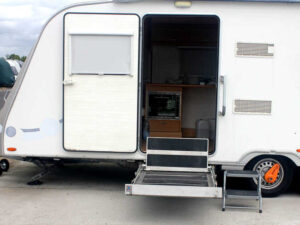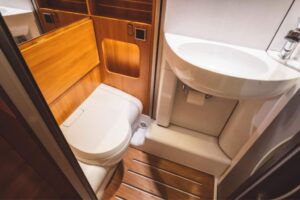Introduction to Static Caravans
Static caravans are a popular choice for many individuals and families seeking a semi-permanent residence or a holiday home. Unlike touring caravans, which are designed to be mobile and frequently moved, static caravans are intended to remain in one location for extended periods. They offer the comforts of a traditional home, including integral kitchens, toilets, and sleeping areas, but with the added benefit of mobility should relocation be desired.
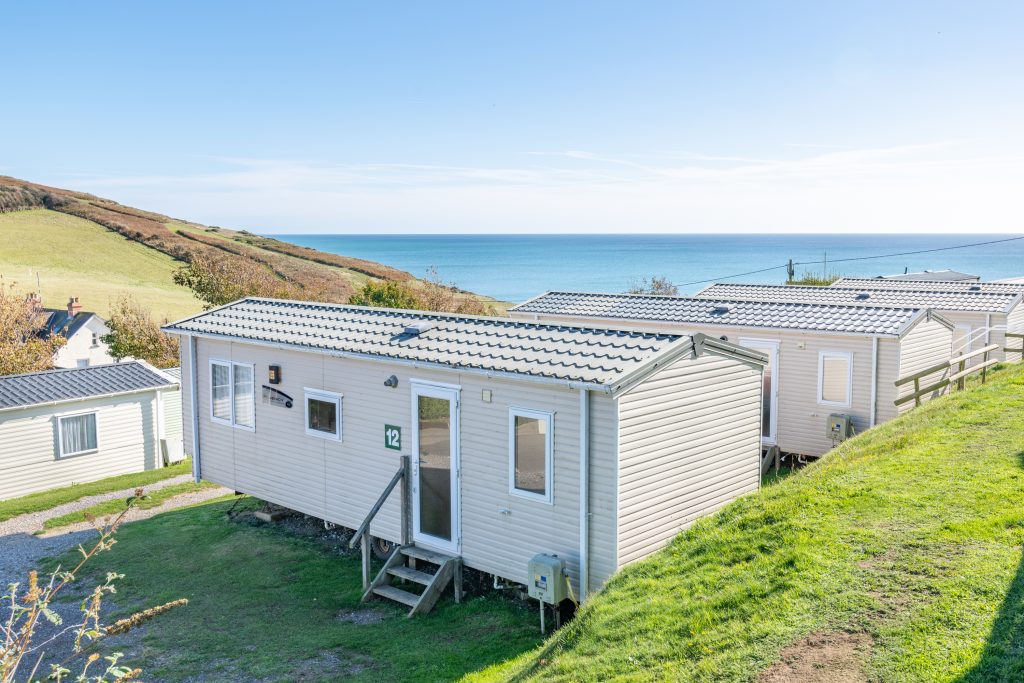
Difference between static and touring caravans:
Touring caravans are designed for regular movement, allowing owners to travel and set up their accommodation in various locations. In contrast, static caravans are more substantial, often larger, and are set up in a fixed location, typically for longer durations. While both types offer the allure of caravan living, their usage and mobility differentiate them significantly.
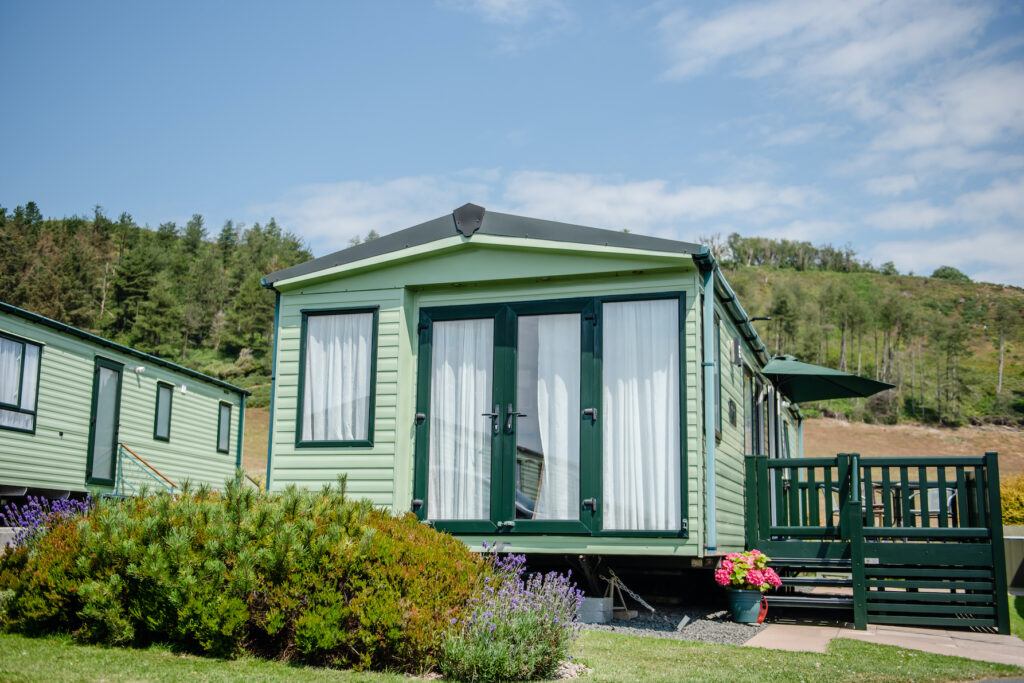
Susceptibility to Wind and Weather
Static caravans, due to their construction and often exposed locations, can be particularly susceptible to the elements. Coastal or rural sites, which are popular choices for caravan placements, often lack natural windbreaks, making caravans vulnerable to strong winds and storms. The lightweight construction of caravans, while advantageous for mobility, can be a disadvantage in adverse weather conditions.
The construction style of caravans and common locations:
Caravans are typically constructed with lightweight materials to ensure ease of transport and setup. This lightweight nature, however, can make them vulnerable to strong winds, especially when placed in exposed locations like coastal or rural areas. These areas often lack the natural barriers, such as large buildings or dense forests, that can shield structures from the full force of the wind.

Chances of a Static Caravan Blowing Over
While static caravans are designed to be sturdy and safe, there is always a limited chance that severe winds could cause them to blow over. Such incidents, though rare, can have disastrous consequences, not just for the caravan itself but also for nearby structures and individuals. It’s essential to understand these risks and take preventive measures to mitigate them.
Factors affecting stability and the importance of mooring:
Several factors can influence a caravan’s stability, including its size, weight, design, and the direction and duration of prevailing winds. To counteract these risks, many static caravans come with recommendations or requirements for mooring, especially at the corners, or fitting with skirting. These measures help anchor the caravan to its location and provide added resistance against strong winds.
Preventive Measures
To safeguard against the potential risks posed by strong winds, static caravan owners must take certain preventive measures. These can range from physical modifications to the caravan and its surroundings to ensuring proper insurance coverage. By taking these steps, owners can enjoy their caravans with peace of mind, knowing they’ve minimized potential hazards.
Securing caravans and regular maintenance:
One of the most effective preventive measures is to securely anchor the caravan to the ground. This can be achieved using a combination of pegs, guide ropes, and other anchoring systems. Additionally, regular maintenance checks are crucial. This includes ensuring that all windows and doors are securely closed during windy conditions and routinely inspecting guide ropes and other securing mechanisms for wear and tear.

Insurance and Documentation
Given the potential risks, it’s imperative for static caravan owners to have comprehensive insurance coverage. This not only provides financial protection in the event of damage or loss but also offers peace of mind. Proper documentation, including insurance papers and any certificates related to the caravan’s construction and safety, should be kept in a safe and accessible location.
Importance of insurance and safekeeping of documents:
Insurance for static caravans typically covers a range of incidents, from wind and storm damage to theft and vandalism. Given the unique challenges posed by caravan ownership, such as exposure to the elements and potential mobility, this coverage is crucial. Additionally, safely storing all relevant documentation ensures that, in the event of a claim or other issues, the owner can quickly provide necessary information to authorities or insurance providers.
Towing and Wind Conditions
Towing a caravan, especially in adverse weather conditions, presents its own set of challenges. High winds can significantly impact the stability of a caravan while it’s being towed. Even when driving at consistent speeds on flat roads, gusty winds can make a caravan unstable, leading to dangerous situations like snaking or even overturning.
Dangers of towing in high winds:
Towing a caravan in high winds is not just a risk to the driver and the caravan itself, but also to other road users. As the wind speed increases, the risk of the caravan swaying or becoming uncontrollable also rises. Generally, it’s advised to avoid towing a caravan in winds exceeding 50 mph. Factors like road conditions and driver experience also play a crucial role in determining the safety of towing in windy conditions.
Safety Measures in Severe Winds
Static caravans, given their semi-permanent nature, require specific safety measures when faced with severe winds. Owners must be proactive in ensuring their caravans are well-secured and protected from potential damage. This might involve seeking alternative lodging during extreme weather or taking steps to weigh down and anchor the caravan effectively.
Securing your caravan in high winds:
In anticipation of high winds, caravan owners can take several steps to ensure the safety of their property. Weighing down the caravan with heavy objects placed centrally can prevent it from being blown over. Additionally, using strong straps, often referred to as storm straps, in conjunction with heavy-duty ground pegs, can further secure the caravan to the ground, offering additional stability.
Static Caravans and Lightning
Lightning poses a unique threat to static caravans. While many believe that caravans, like cars, act as Faraday cages, protecting occupants from lightning strikes, this isn’t always the case. The safety offered by a caravan during a lightning strike largely depends on its construction and grounding.
The concept of the “Faraday Cage”:
A Faraday cage is a protective shield against electromagnetic fields, including those from lightning. For a vehicle or structure to act as a Faraday cage, it typically needs to have a conductive outer layer. In the case of caravans, those with a metal outer layer can offer some protection, directing the electrical charge from a lightning strike safely into the ground. However, it’s essential to understand that not all caravans are constructed this way, and even those that are might not offer complete protection.
Stabilizing Caravans in Wind
The lightweight nature of caravans makes them susceptible to shaking or swaying in the wind. While it might be challenging to eliminate this movement entirely, there are measures owners can take to reduce it. These include using stabilizers, positioning the caravan optimally, and employing windbreaks.
Using stabilizers and positioning the caravan correctly:
Stabilizers can significantly reduce the movement of a caravan by providing additional support and enhancing stability. They work by increasing friction at the caravan’s connection points, preventing unwanted movement. Additionally, the caravan’s positioning can also influence its stability. Facing the caravan into the wind, for instance, can help reduce the impact of gusts. Employing windbreaks, such as barriers or natural vegetation, can also shield the caravan from direct wind exposure.
Awnings and Wind Conditions
Awnings are popular additions to static caravans, providing extra sheltered space. However, they can be particularly vulnerable in windy conditions. If not properly secured, awnings can get damaged or even become potential hazards, flying off and causing injury or damage to nearby structures.
Recommended wind speeds for using awnings:
While awnings can provide added comfort, they have their limitations, especially in windy conditions. Most self-supported awnings are tested to withstand wind speeds of 20 to 25 mph. However, these tests often assume steady winds, not the gusty, buffeting winds that can be more damaging. It’s crucial for caravan owners to be aware of the weather forecast and take precautions, such as using storm straps or even taking down the awning if high winds are expected.
Conclusion
Static caravans offer a unique blend of mobility and comfort, serving as cherished holiday homes or semi-permanent residences for many. However, their very nature, combined with the often-exposed locations where they are stationed, makes them susceptible to the whims of the weather, particularly strong winds and storms. From understanding the fundamental differences between static and touring caravans to recognizing the potential risks of towing in high winds, it’s crucial for owners to be well-informed. Proactive measures, such as securing the caravan properly, understanding the implications of lightning strikes, and being cautious with awnings in windy conditions, can go a long way in ensuring the safety of the caravan and its occupants. Insurance, while often overlooked, provides an essential safety net, protecting owners from potential financial setbacks due to weather-related damages. In essence, while static caravans offer a world of benefits and unique experiences, it’s the responsibility of the owner to ensure they are well-prepared and educated about potential challenges. By taking informed precautions and being proactive in maintenance and safety measures, one can enjoy the joys of caravan living without undue worry, come rain or shine.
